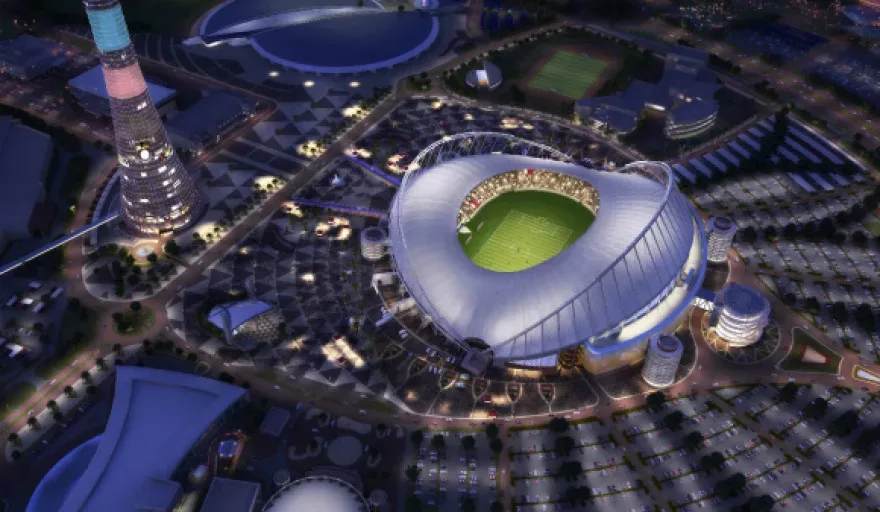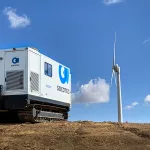INTRODUCTION
In the words of the Guardian: “Qatar’s huge oil & gas reserves have, in the space of just four decades, taken it from a Persian Gulf backwater known for pearl diving and fishing, into the richest country on Earth per capita”.
It should therefore come as no surprise to hear that the country’s commercial and residential property markets are thriving, with close-to $135 billion worth of contracts due to be awarded to fund Qatar’s megaprojects between 2015 and 2020. As one of the world’s richest countries, Qatar is proving itself as an extremely desirable country in which to do business, offering an abundance of opportunities for investors and developers alike; with particular emphasis falling on the glitz and glamour of the retail, hotel & hospitality and tourism sectors.
Qatar is taking centre stage as investors worldwide foresee the rapid development as a strategic opportunity to capitalise on the GCC region’s aspirational growth plans and meet the requirements for the huge number of tourists and sports fans alike who will visit the country for the 2022 football World Cup.
For some people, the sporting event might be their first visit to Qatar or even the region, which provides a unique opportunity for the country to attract returning visitors, for both business and pleasure.
THE CHALLENGES AHEAD
From the QAR136.5 billion Qatar Rail roll-out to the comparatively modest QAR20 billion and QAR30 billion sums attached to Education City, Msheireb Downtown, Barwa City and the 2022 World Cup stadiums, Qatar’s megaproject list currently accounts for a major portion of the globe’s current construction pipeline. This local construction drive is coming at a time when the world as a whole is a lot less financially confident, making construction here all the more competitive, while marred by tough time constraints to keep its promise of on-time completion.
The necessary fast-tracking of these projects in order to deliver on-time means that Qatar faces extra challenges and pressures; such as suffering from reduced planning times, higher inflation costs, increased lead times for materials and a scarcity of skilled workers. These bottlenecks have created concern in terms of the added risks for investors.
“It is expected that the lead time [on certain supplies] will increase by 20 percent due to concurrent demand by the various parallel ongoing major projects, in addition to the expected rise in all construction and material costs and increase in the delivery time,” said Ahmed Fouad, the Planning and Risk Management Coordinator for Consolidated Contractors Company, Qatar in a recent interview.
Delays and implementation constraints are similarly a key concern for Vasanth Kumar, CEO of Arabian MEP Contracting, who stated in 2014: “The greatest challenge facing the construction industry, especially contractors, is project delays…Any delay in receiving approvals seriously affects a projects’ progress and also hurts the contractor due to expense overruns.”
With global pressures on climate change affecting all four corners of industry, the new megaprojects have some tough green building targets to meet long-term environmental goals. Trends such as this raise the skills bar leading to the engagement of highly specialised contractors, many of whom invariably come from abroad and cost more to employ to do the job. However, this is something which should change over time given the number of projects currently underway and the subsequent skills sharing already taking place.
“Shortage of skilled manpower is another major risk during the construction phase of a project. The situation could become similar to the shortage that happened before the Asian Games in 2006 and again in 2008 during the construction boom in Qatar. But this time, the proportion of the risk will increase due to other factors such as the shortage of efficient workforce on the back of immigration policies which impose restrictions for demographic balancing purposes,” explained Fouad.
There are other risks at the interface level, especially with Government organisations, such as timely issuance of work permits for excavation and construction from Baladiya, final design approval from civil defence, and handover for the fire detection and fighting systems, and approval from Kahramaa for power and utilities supply. These approvals take a long time and with the sheer amount of projects on the table, they are expected to take longer.
FINANCING QNV 2030
In spite of the number of potential issues, the scale, design and vision for megaprojects in Qatar is nonetheless impressive. The country is currently eight years into its national development plan, the Qatar National Vision 2030 (QNV 2030); “a master vision and roadmap towards Qatar becoming an advanced society capable of sustainable development, with the goal of providing a high standard of living for all citizens”.
Outlined on the annual Project Qatar exhibition’s website, the main current and future megaprojects include: Qatar Railway Project, with an estimated cost of US$35 billion; 12 World Cup 2022 stadiums, with a combined 500,000 seat capacity; about 240 five-star international hotels, containing more than 90,000 rooms; a US$5.5 billion Doha New Port project; and all the relevant amenities such as malls, entertainment cities, commercial complexes and residential units required to complement this hospitality and leisure offering.
Looking at this list not only reveals the enormity of the tasks ahead, but also the size of the State’s project financing commitments testament to the country’s huge financial reserves. Oliver Cornock, Regional Editor, Middle East, Oxford Business Group commented in 2015: “For the past several years, Qatar has recorded significant budget surpluses, building up a diversified savings and investments portfolio both at home and around the world.
“There is also considerable momentum in the economy as a result of major project investments in previous years and organic population growth. The latter expanded 9.5 percent in the year March 2014-March, 2015, while real GDP growth hit 6.7 percent in the fourth quarter of 2014, according to Qatar National Bank (QNB) figures. That quarter, non-hydrocarbon sector growth reached 10.3 percent; with construction and services the main growth engines.”
This level of expansion is reflected in the fact that Qatar’s banks have seen very little change in their deposit bases, or any shift away from the riyal to foreign exchange which has raised investor confidence.
Despite the falling oil prices, with LNG being Qatar’s main hydrocarbons sector earner, the country will still make around US$372 billion (QAR1.35 trillion) in revenue from hydrocarbons over the next five years.
Cornock summarised: “While recent events have undoubtedly impacted Qatar’s financial strength, the country is well cushioned to avoid any major damage. What budgetary adjustments there have been may also have long-term benefits for project finance.
“All of these factors make Qatar quite an exceptional market, with the Government set to continue its well-financed project roll-out unabated in the years ahead.”
Read this article and more in the latest issue of EME Outlook here.























